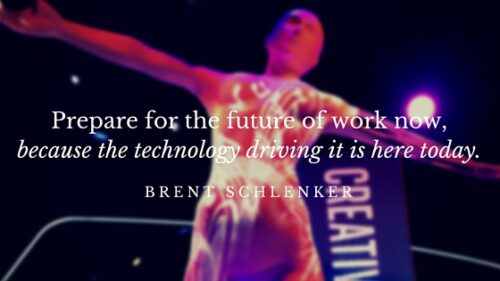The Future of Learning Experiences is Here Today
At CES2016, Ginni Remmity, CEO for IBM, delivered her keynote focusing on one trend: Cognitive IoT. It’s the overarching term she uses to cover analytics, cloud, mobility, security, wearables, and all the other individual trends in technology today. She refers to digital as the foundation for all of it. But when everything is digital, the new challenge is making meaning of all that digital data. The challenge of understanding data is what IBM does best.
“the most disruptive transformative trend is now in front of us. And it’s cognitive. This ability to think to learn to understand. The systems the products the processes and everything you do. And it is the dawn of a new era. The cognitive era.” – Ginni Remmity, CEO, IBM
Training Teams Can Expose “Dark Data” to the Light
An interesting point she makes is that about “80% of data is “dark data”. This is the digital content that is stored somewhere, but there is no system that knows what that data is in order to make use of it. And this is where training departments can add value. I believe that the trend in cognitive is in front of us. But for most of us and the companies we work for, it’s a trend that’s WAY out in front of us. There is at least a decade of transition before the cognitive era of computing begins to seriously effect the work we do. While we wait for the cognitive internet of things to evolve, there is still that massive amount of digital dark data providing no value to the business.
This is where training professionals can help. We have the infrastructure and expertise to seek out important dark data and bring it into the light. Part of what we do best is digging up existing content as part of our analysis process. But here’s the twist. Instead of holding on to that content while we transform it into a proper eLearning course, just make it available immediately and more easily accessible than it was before. Use your LMS and call it a course if there are no other tools at your disposal. Litmos is great at this. You may end up discovering that a previously urgent need for a training course mysteriously becomes not so urgent.
In large companies you may say this is the responsibility of the Knowledge Management or Communications team, or some other similar group. But not many companies have KM groups these days. Besides all of the other training needs you should be addressing, this one is the lowest of low hanging fruit. It quick and easy to implement and will satisfy a significant number of employees. Those adult learners who prefer to guide their own learning will thank you, and the rest will get with it until you have the time and resources to improve it.
Remmity’s keynote is filled with very interesting insights about cognitive IoT and I would highly recommend taking the time to watch the video of her presentation.
Intel’s Vision of Future Changes Learning Experiences
Another interesting presentation came from the opening keynote by Brian Krzanich, Intel CEO. Intel sees three major trends that their technology drives:
- Smart and Connected
- Sensification of Computing
- An Extension of You
Together these trends are doing one thing. And that’s creating new, or changing existing, experiences. By flying 100 drones simultaneously and synchronizing their lights and movements to an orchestra Intel changes the possibilities for future fireworks displays. And that’s an experience that’s been relatively unchanged for hundreds of years.
If that doesn’t get you thinking about creating learning experiences then maybe this will. Intel is also working with the Xgames to collect and display more data than ever before from the athletes and their equipment. Consider how this might effect some of the jobs you may already be creating training for.
You may not be a fan of the X Games or a fan of snowboarding, but now that the experience of watching the sport has changed, you might too.
These are just a few of the technologies that exist today and are changing how we experience the world around us and how we interact with it. It may take a while, but soon these technologies will also impact the workplace. It’s important to prepare your company with flexible systems with accessible APIs and strategic partnerships with the businesses that collect and manage the data you work with like Salesforce and others. Prepare for the future of work now because the technology driving it is here today.






